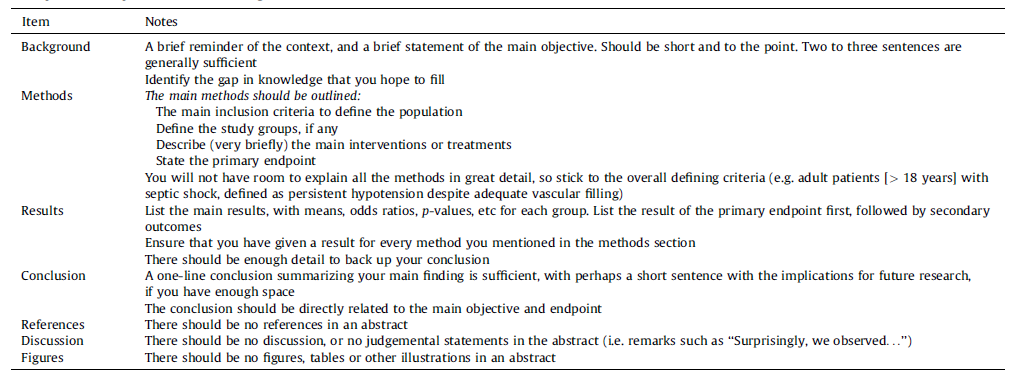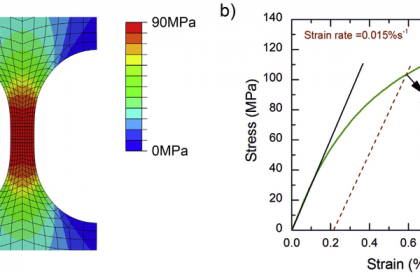Many young researchers find it extremely difficult to write scientific articles, and few receive specific training in the art of presenting their research work in written format. Yet, publishing is often vital for career advancement, to obtain funding, to obtain academic qualifications, or for all these reasons. We describe here the basic steps to follow in writing a scientific article. In this article, we will review the guide published by F. Ecarnot from the University Hospital Jean-Minjoz France.
Getting Started
A certain amount of preparatory work needs to be done before you ever write a word of your article. This background work should generally already have been accomplished by the time you are at the writing stage because it also serves as background to the research project you are writing about.
- It is helpful when you are reviewing the literature, to take notes of important points or phrases that you intend to include in your article, with the relevant references.
- Before starting to write, you should identify the target journal in which you intend to submit your research.
This will have consequences for the formatting, but more importantly, for the orientation of your writing style, since the writing must be appropriate for the type of reader you are targeting.
What are the main sections?
The vast majority of scientific journals follow the so-called ‘‘IMRAD’’ format, i.e. introduction, methods, results and discussion. Naturally, there are some exceptions to this rule, and you should always check the instructions for authors of the journal where you plan to submit your paper to ensure that this is indeed the recommended format.

Your article should thus contain (in this order) an introduction, a methods section, a results section and a discussion. Added to this will be abstract, which is more or less a summary of these main sections, and of course, the title. In the end, there must be a list of bibliographic references, the tables, and the legends to any figures.
Introduction
An introduction is where you introduce your research topic to readers with knowledge of backgrounds and literature review. Particularly your literature should explain (Preferably in chronological order) what other scientists have done, what sort of methods they followed, what research questions were answered thanks to their studies.
At last but not least, what is the gap in this research area (What hasn’t been done so far) you should clearly explain what differs your work from previous studies, what are your primary or secondary objectives

Methods
The objective of the methods section is to describe exactly what you did, and how, in sufficient detail such that any average reader with the same resources at their disposal would be able to reproduce your study. There must be a method described for every result you intend to include in your results section. Readers shouldn’t be surprised when they look at the results. For example, if you have tensile test results in the Results chapter, you must explain how you performed that tensile test, how many specimens were used, what sort of tensile test machine was configured for the test, what was the elongation speed, was an extensometer attached etc. It would be nice to show the configuration of the experimental setup in figures.
As regards the tense to use for your writing, the methods should mainly be described using the past (imperfect) tense, i.e. It was performed, Results were recorded, we measured, we tested. . .
Results
The aim of the results section is to describe what you observed, without commentary or discussion. It is no longer necessary to describe the methods; this has already been done in the methods section, so just give the result. Nobody cares what you think in this section, refrain to use good, bad, interesting or unexpected adjectives. Results must contain solid numbers, solid results and objective outputs without any comment.
Readers will match what you told in methods and what results you found. You must describe a result for every method that was outlined in the methods section.
A major question for many researchers when writing the results section is whether to describe the results in the text or use a table or figure. While there are no strict rules for this, in general, results that can easily be described in one or two lines can be written in the text.
Discussions
This discussion is where you interpret and explain the significance of your results, and how they fit into the wider picture of what has already been observed and reported on the same topic.
A discussion section DOES NOT mean to express the results again
That really differs the discussion section from the results because we already describe the findings without commentary and discussion in the results section. Now it is time to justify these results and prepare them for the conclusion section. Explain if there was any drawback or insufficient data in the results or in the methods. What is the contribution of these results to this research area, generalise the findings by referring to the literature.
If your findings are different, do you have any plausible explanations? What are the possible discrepancies in circumstances, populations or approaches that may explain why you observed what you observed?
For example, instead of asserting that ‘‘Smith’s study was underpowered’’, it is helpful to use a softer tone and a more precautions formulation, such as ‘‘Smith’s study may have been underpowered’’, or better yet, ‘‘Our study had sufficient statistical power to detect’’. . .
In practical terms, you may indicate how your results are likely to influence practise or the state of knowledge. For example, will your results sway the general opinion one way or the other?
Conclusions
Before starting, I should say that many researchers do skimming for their literature review, and quickly read abstract, research questions in the introduction section and straightly go to the conclusion section. If they find it interesting, then they start reading the other sections.
The conclusion of a research paper is where you wrap up your ideas and leave the reader with a strong final impression. It has several key goals:
- Restate the research problem addressed in the paper
- Summarize your overall arguments or findings
- Suggest the key takeaways from your paper
- The content of the conclusion varies depending on whether your paper presents the results of original empirical research or constructs an argument through engagement with sources.
Keep in your mind that the research questions that were asked in the introduction need to be answered in this section. So when readers look at the last paragraph of the introduction section and conclusion section, they should be able to understand what has been done, what is the scientific contribution of this study. Particularly, the conclusion section is the main take-home message to come out of your work.

BONUS
The University of Manchester provides an Academic Phrasebank which is a general resource for academic writers and it contains a number of example sentences for all the sections we described above.
https://www.phrasebank.manchester.ac.uk/
References
1-https://www.sciencedirect.com/science/article/pii/S1878764915001606
2-https://www.scribbr.com/research-paper/research-paper-conclusion/








